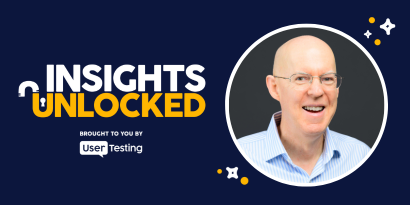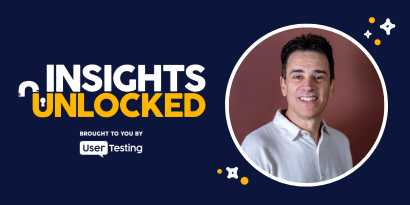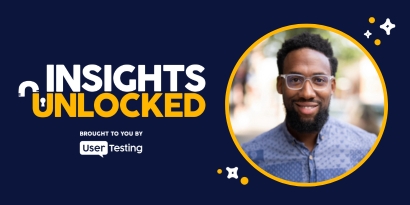
Episode 184 | August 18, 2025
Every (buying) decision is emotional
Learn how Talia Wolf uses emotional targeting to boost conversion rate optimization by connecting with customer emotions that drive decisions.
Why emotional targeting is the missing link in conversion rate optimization
Most marketing teams are working hard but running in circles and they don’t even realize it. They tweak button colors, rewrite headlines, and A/B test ad copy, yet the results barely move the needle. Why? Because they’re focusing on tactics while ignoring the real driver of conversions: customer emotions.
In a recent episode of Insights Unlocked, Nathan Isaacs sat down with Talia Wolf, founder of GetUplift and author of Emotional Targeting, to talk about how emotions shape buying decisions and why mastering them can completely transform your conversion rate optimization (CRO) strategy.
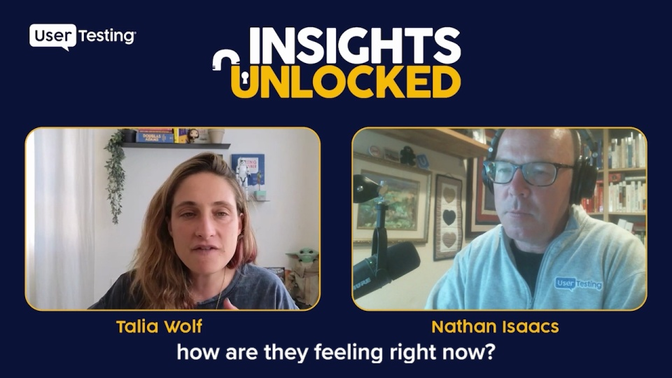
From tactics to strategy: escaping the CRO hamster wheel
Talia calls it the “deadly hamster wheel of optimization.” It’s when marketers see low conversion numbers, run to Google for “best practices,” or copy a competitor’s landing page in hopes of quick wins.
“We’re all sounding the same and doing the same,” she says. “The reason we get stuck in tactics is because we don’t have a good strategy. Google Analytics tells you where the problem is, but it doesn’t tell you what led to it.”
Without a strategy rooted in understanding the customer journey, optimization efforts become repetitive and superficial. Talia’s solution is to start with a deep dive into what motivates customers emotionally—not just the functional benefits they expect from a product or service.
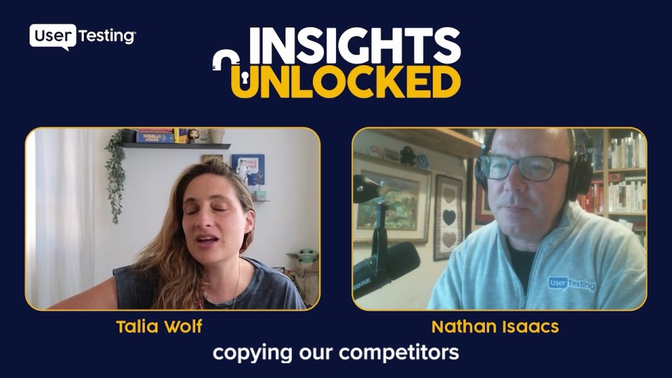
The science behind emotional targeting
When Talia transitioned from social media marketing to CRO, she noticed a glaring gap: most optimizations focused solely on usability and persuasion tactics without asking why people were buying in the first place.
She points to research by neuroscientist Antonio Damasio, who famously said, “We are not thinking machines that feel; we are feeling machines that think.” Every decision, from choosing a SaaS tool to buying a watch, is driven primarily by emotion.
According to Talia, emotional targeting means:
- Understanding how customers feel before finding your solution
- Identifying the pain points and fears influencing their decision-making
- Knowing how they want to feel after solving the problem
- Communicating those emotional outcomes throughout the experience
This approach shifts CRO from “What can I change on the page?” to “What problem can I solve for my customer?”
ON-DEMAND WEBINAR
Fix the gaps: how to optimize the customer journey for better ROAS and higher ROI
An example from a “boring” industry
Marketers sometimes assume emotional targeting works best for luxury or lifestyle brands. Talia proves otherwise.
She shared the story of a client selling Q&A software for engineers, a product that might seem dry and purely functional. Through emotional targeting research, Talia’s team discovered a striking insight: many QA engineers felt undervalued in their companies.
“They’d say, ‘I do super important work… but everyone rolls their eyes when I speak up because I slow things down.’ That’s a huge emotional trigger,” she explains.
Rather than focusing solely on features and pricing (which were similar to competitors), Talia’s team reframed the messaging: using the product would help engineers be recognized and appreciated for their contributions.
By weaving this emotional outcome through product pages, ads, and email campaigns, the company saw significant conversion lifts. The takeaway? Every product, no matter how technical, can connect with customers on a human level.
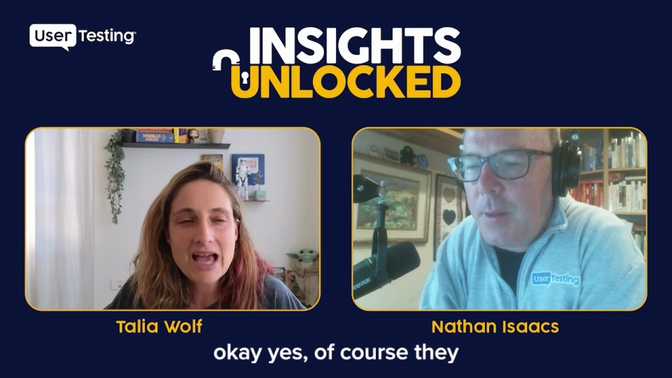
How to uncover emotional triggers
Emotional targeting starts with research, not guesswork. Talia recommends combining qualitative and quantitative methods to build a complete picture.
Here are some strategic questions she uses when auditing a customer journey:
- Is the messaging focused on the company or the customer?
- Are the customer’s pain points clearly reflected on each page?
- Do visuals, colors, and design elements support the emotional message?
- Can the visitor quickly see the emotional outcome of using the product?
These questions go beyond typical UX checks like “How many form fields?” or “Is the button visible?” They require understanding the why behind customer actions, not just the what.
Choosing what to optimize first
Not every business has the traffic or resources to run large-scale A/B tests. For smaller teams, Talia advises focusing on bigger, strategic changes rather than micro-optimizations.
“If I’m Amazon, I can test the shade of an orange button,” she says. “But most of us can’t. We have to zero in on problem solving.”
Her recommendation:
- Identify the stage of the customer journey that’s underperforming.
- Form a hypothesis about the emotional gap causing friction.
- Test a targeted change—copy, imagery, offer—that addresses this emotional need.
- Measure results, then apply what you’ve learned across channels.
This way, every test is either a win or a valuable learning opportunity.
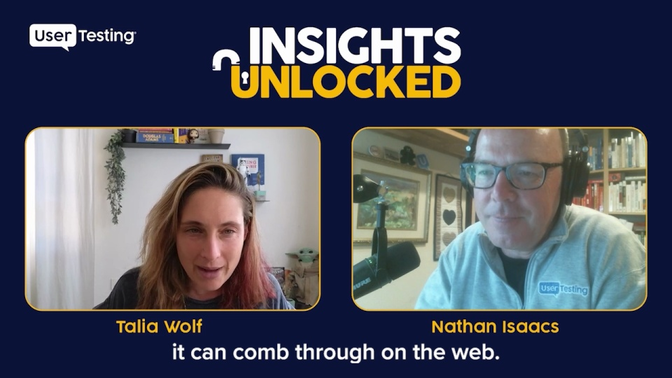
Using AI without losing the human touch
Artificial intelligence has become a popular tool in marketing, but Talia warns against using it as a shortcut.
“If you feed ChatGPT a generic prompt, you’ll get generic answers. And that’s why everyone starts to sound the same,” she says.
Instead, she suggests using AI as a strategic partner:
- Input rich, customer-specific insights from your emotional targeting research.
- Use AI to brainstorm ideas, test variations, or synthesize findings.
- Share those insights across teams—from sales to product—to create a unified customer understanding.
The rule is simple: garbage in, garbage out. AI amplifies the quality of the data and thinking you bring to it.
GUIDE
Unlock what works: how to test your creative to connect, convert, and inspire
Why technology changes but people don’t
CRO trends come and go (personalized landing pages, minimalism, AI) but Talia insists the fundamentals remain constant.
“You can’t use any tool unless you have strategy behind it,” she says. “Your superpower should be knowing your customers. Once you have that, you can use any tool and any technology.”
This means emotional targeting isn’t just another tactic—it’s the foundation that makes all other optimizations work harder.
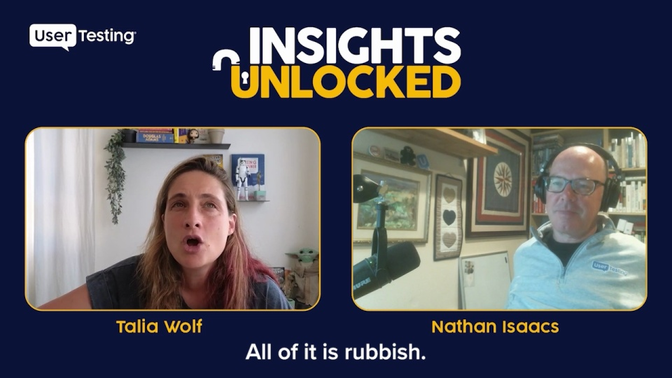
Building a customer-focused culture
Leaders often struggle to get buy-in for customer-first strategies, especially across product, UX, and marketing teams. Talia’s advice is to start small:
- Do the research. You don’t need permission to run emotional targeting interviews or surveys.
- Run a low-risk experiment. Test a message or creative variation that speaks to a key emotional trigger.
- Share results internally. Show colleagues how the emotional approach performed compared to generic messaging.
This step-by-step method proves the value of emotional targeting without requiring an expensive redesign or overhaul.
Key takeaways for marketers and UX professionals
From the conversation, several actionable insights emerge:
- Shift focus from tactics to strategy. Stop chasing quick wins and start addressing the root causes of low conversions.
- Map the emotional journey. Know how customers feel before, during, and after engaging with your brand.
- Use emotional triggers in all touchpoints. Messaging, visuals, and even navigation should align with the emotional outcome you’re promising.
- Test with purpose. Make changes that solve a specific customer problem, not just because it’s a “best practice.”
- Leverage AI thoughtfully. Feed it meaningful insights to get meaningful outputs.
- Create organizational buy-in. Share research and test results across teams to embed customer focus into company culture.
The bottom line
Emotional targeting isn’t a “soft” approach, it’s a strategic method for unlocking higher conversions and stronger customer loyalty. By stepping off the hamster wheel of surface-level CRO tactics, teams can create experiences that resonate deeply and drive measurable results.
“Technology changes. People don’t,” Talia said. “Your superpower should be knowing your customers. Once you have that, you can use any tool and any technology.”
Episode links
- GetUplift – Talia Wolf’s company
- Emotional Targeting by Talia Wolf
- Nathan Isaacs – host of Insights Unlocked
- Talia Wolf on LinkedIn – guest, founder of GetUplift and author of Emotional Targeting
- Antonio Damasio – neuroscientist and researcher on emotion and decision-making
- Unlock higher conversions: understanding what users really want: This on-demand webinar explores how to go beyond analytics to uncover hidden friction, streamline user journeys, and enhance conversions by leveraging real customer feedback
- Optimizing conversion rates for retail and consumer brands: This guide provides practical strategies for improving ecommerce performance, reducing friction, and maximizing ROI through optimized digital experiences
- The power of emotional data: This on-demand webinar delves into concept and campaign testing methods that use emotional feedback to inform marketing strategy and messaging
- How to create customer journey maps to increase conversions: This blog post details how mapping the customer journey—including emotional touchpoints—can identify barriers and opportunities to boost conversions
PRODUCT TOUR
Inside the Human Insight Engine
See how top teams get fast, actionable insights in this 20 - 30 minute biweekly product tour, where each session highlights a unique real-world use case.





